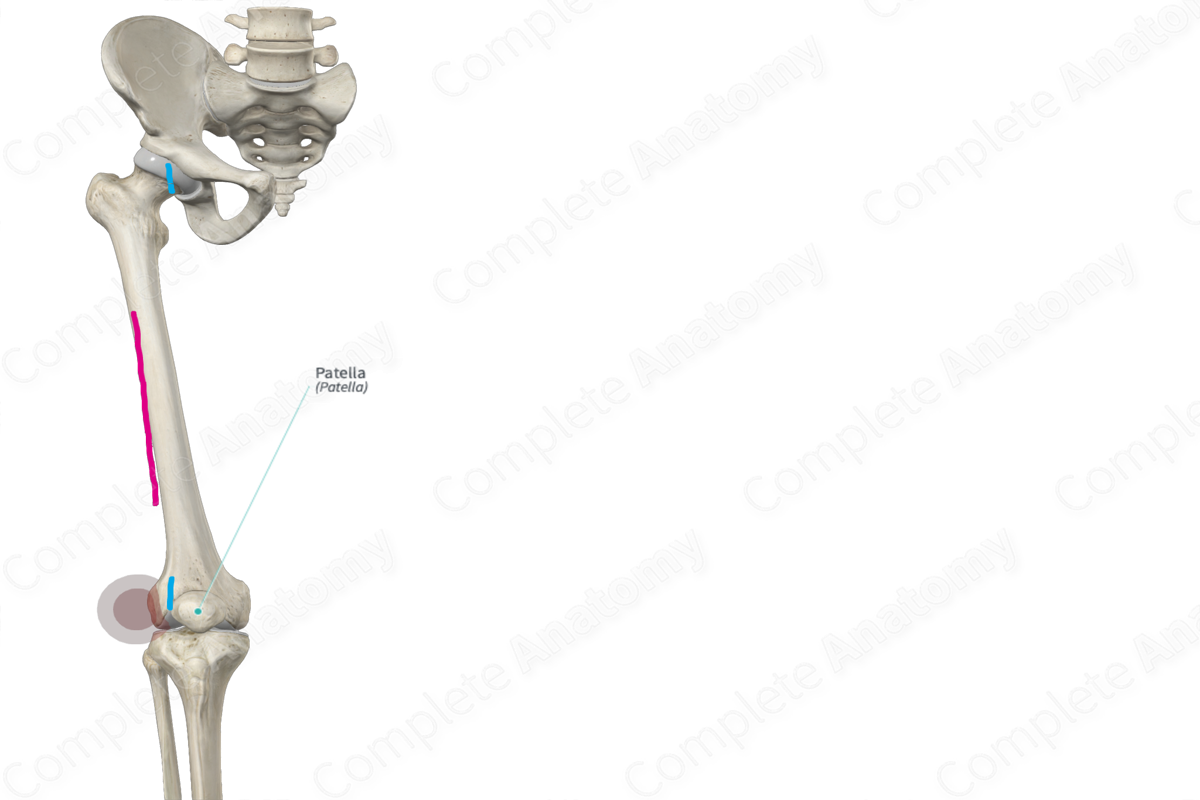
Quick Facts
Location: Knee region.
Bone Type: Sesamoid bone.
Key Features: Apex, base, articular and anterior surfaces, vertical ridge, and medial and lateral articular facets.
Articulates With: Femur.
Arterial Supply: Genicular anastomosis.
Related parts of the anatomy
Key Features & Anatomical Relations
The patella (or kneecap) is a bone found in the knee region. It’s somewhat triangular and is classified as the largest sesamoid bone. It contains the following bony features:
- surfaces: articular and anterior surfaces, medial and lateral borders, apex, and base;
- landmarks: vertical ridge and medial and lateral facets.
More information regarding these bony features can be found in the Surfaces and Landmarks tabs for this bone.
The patella is located anterior to the knee joint, within the quadriceps tendon. The patellar tendon extends inferiorly from the apex of the patella to the tibial tuberosity. The patella articulates with the femur at the patellofemoral joint, which contributes to the formation of the knee joint.
The patella’s functions are to strengthen the quadriceps tendon for knee extension and to reduce friction between the quadriceps tendon and adjacent bones at the knee joint.
Ossification
Ossification of the patella occurs at several ossification centers, which appear within the third to sixth years. Complete ossification occurs during early adolescence (Standring, 2016).
Variations
In some individuals, the patella may be present in a bipartite or tripartite condition (i.e., divided into two or three parts, respectively). This usually results from failure of the ossification centers to fuse (Tubbs, Shoja and Loukas, 2016).
Surface Anatomy
With regard to surface anatomy, the anterior surface of patella is subcutaneous and therefore easily palpated.
List of Clinical Correlates
- Patellar fracture
- Patellar tracking and dislocation
- Patellofemoral pain syndrome
References
Standring, S. (2016) Gray's Anatomy: The Anatomical Basis of Clinical Practice. Gray's Anatomy Series 41st edn.: Elsevier Limited.
Tubbs, R. S., Shoja, M. M. and Loukas, M. (2016) Bergman's Comprehensive Encyclopedia of Human Anatomic Variation. Wiley.
Learn more about this topic from other Elsevier products
Patella

Hybrid simulation is a term coined by Kneebone (2003)33 to describe the process of attaching a simulator to a simulated patient.



